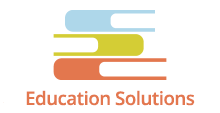Is Teaching English as a Second Language (TESL) right for you?
English as a Second Language (ESL) or English for Speakers of Other Languages (ESOL) teachers work exclusively with students who are learning English, often referred to as English Language Learners (ELL), to help them master the English language. Teaching English as a second language is a high-demand subject of instruction that continues to experience growth in schools across the country. Teachers may work in the U.S. with immigrant students, or in foreign countries, and often work with students individually, in groups, or in inclusive classrooms or bilingual schools.
ESL is offered for children and young adults who are not fluent or whose native language is not English. The ELL student has the unique and very challenging struggle of trying to learn a language and often trying to learn standard school subjects in that language at the same time.
Teachers may have a certification, bachelor's degree or master's degree in ESL, English as a Foreign Language (EFL) or English for Speakers of Other Languages (ESOL). Many schools abroad require only a bachelor's degree in any subject, while American public schools require state certifications in ESL, EFL or ESOL.
Where do ESL/ESOL teachers work?
Although these programs are considered supplementary programs and therefore are not offered in every public school, ESL teachers are still employed in many public elementary, middle and high schools. ESL teachers also may be employed by private institutions as English tutors.
Teachers earn an average of $48,000 a year and receive public school benefits like health insurance and paid school holidays. Many foreign countries will provide ESOL teachers with housing accommodations, travel compensation, and health benefits.
Teaching abroad
Teaching English to Speakers of Other Languages (TESOL) is the most common subject area educators teach abroad. Native English speakers (English and American) are the most sought after for TESOL programs.
Bilingual Education
Like ESL, Bilingual Education is not a standard or mandated part of school curriculum, however some schools offer it. Bilingual Education exists in many forms, including Transitional Bilingual, Two-Way or Dual Language Immersion, and Late-Exit or Developmental Bilingual Education. Bilingual classes are often taught by bilingual teachers, or will have a translator to assist.

